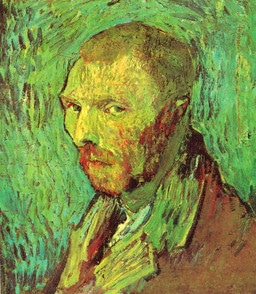Vincent van Gogh, “Self-portrait”

Setting. In 2019, Art Recognition was asked by a leading van Gogh expert and scholar to carry out an AI analysis on a series of van Gogh paintings. Amongst them was the controversial Self-portrait from the Norwegian National Museum in Oslo. At that time, we knew nothing about the latest ongoing research on this painting’s authenticity – which at the beginning of 2020 has been made public by van Gogh Museum in Amsterdam, stirring a sensation worldwide.
Learning van Gogh. We started by training our deep convolutional neural network (a type of Machine Learning model which we adapted to work with images) to learn van Gogh by using hundreds of original images from de la Faille Catalogue Raisonné. Moreover, to help the system better distinguish forgeries, we also fed in well-known (labeled) fakes like for example the famous Wacker forgeries. Our van Gogh training remains one of our most robust and reliable models, also thanks to the availability of many images of excellent quality.
One of our most precise assignments. Our AI has classified the Oslo Self-portrait as authentic with a probability of 97% – one of the most accurate assessments our algorithm has ever produced! To provide visual evidence on the algorithm’s evaluation, we have also generated a heat map which is interpreted as follows: the most important areas for the algorithm’s decision are those highlighted in red, and the importance gradually decreases proportional to the shade of red; at the other end of the spectrum, the regions which are not colored have the smallest influence on the decision. Therefore, the hotspot areas have the highest importance for the final decision.
Epilogue. It is worthy of stressing that we analyzed this painting weeks before the official announcement from van Gogh Museum, and had no knowledge whatsoever about the latest developments. Looking back, it is quite upsetting that we did not publish our results earlier, but it is at the same time a great confirmation of our algorithm’s performance.
